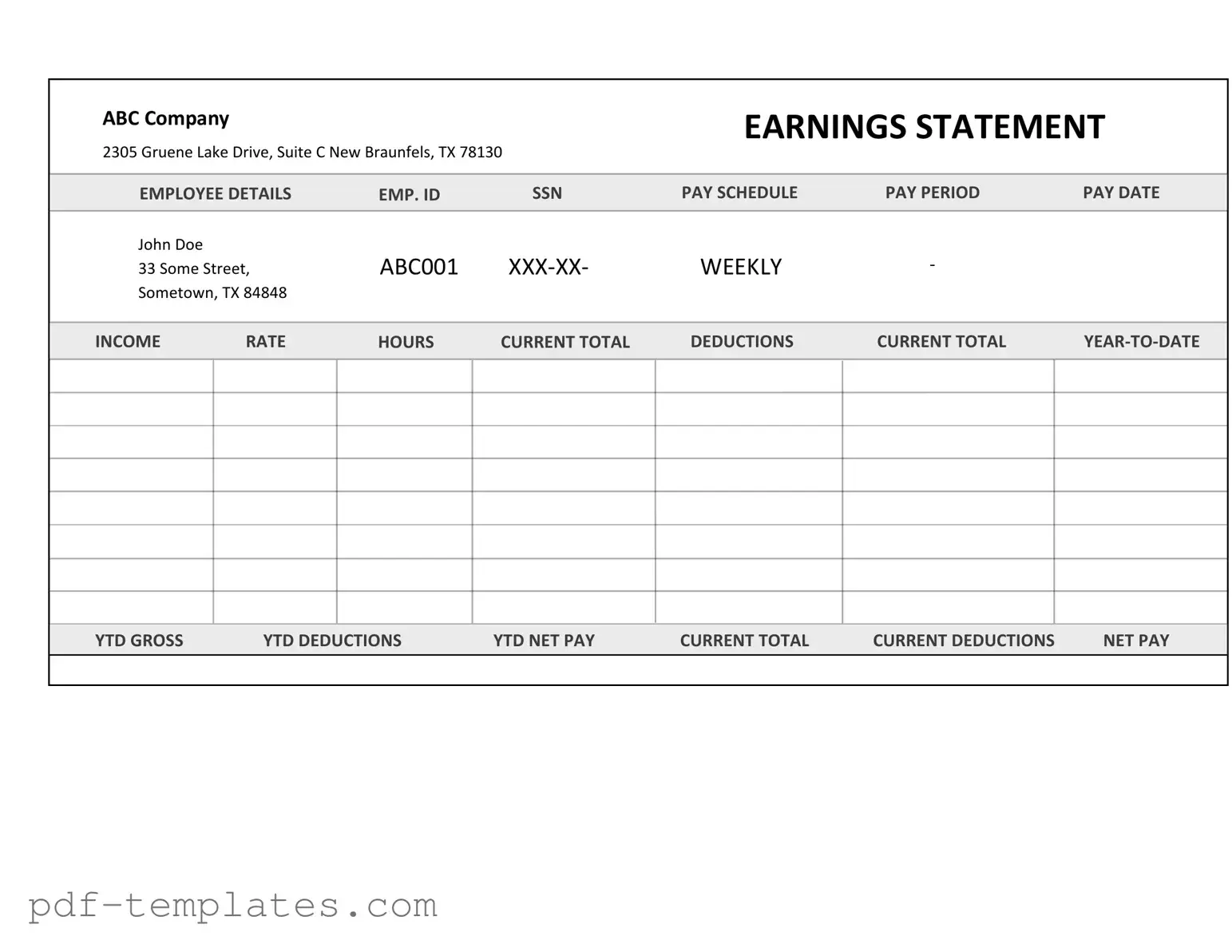The Independent Contractor Pay Stub form is similar to a traditional employee pay stub, which provides a detailed breakdown of wages earned, taxes withheld, and deductions. Both documents serve to inform the recipient about their earnings for a specific period. While employee pay stubs typically include information about benefits and tax withholdings, the independent contractor version focuses more on gross pay and any applicable fees or commissions. This makes both forms essential for understanding compensation, although they cater to different types of workers.
Another document that resembles the Independent Contractor Pay Stub is the invoice. An invoice is a request for payment that outlines the services rendered and the amount owed. Like a pay stub, it provides clarity on the payment details, including the date of service and the total amount due. However, invoices are usually sent from the contractor to the client, while pay stubs are generated by the payer to inform the contractor of their earnings.
Understanding the nuances of various financial documents is crucial for independent contractors, including forms such as the California Agreement Room form, which is essential for rental arrangements in private homes. This specific document outlines the essential rights and responsibilities of both landlords and tenants, much like the agreement details in contracts. For access to various related documents and resources, you can find them at All California Forms.
Similar to both the pay stub and invoice, the 1099 form is crucial for independent contractors. This tax document reports income earned by freelancers and is issued by clients who have paid them. While the pay stub details earnings for a specific pay period, the 1099 summarizes total earnings for the entire year. Both documents play significant roles in tax reporting, helping contractors keep track of their income and obligations.
The earnings statement is another document that shares similarities with the Independent Contractor Pay Stub. This statement provides a comprehensive overview of an individual’s earnings, including bonuses and commissions. While it is typically used for employees, it can also apply to independent contractors who receive variable compensation. Both documents aim to provide transparency regarding earnings, making it easier for recipients to manage their finances.
A commission statement also resembles the Independent Contractor Pay Stub, particularly for contractors who earn commissions on sales or services. This document details the commissions earned over a specific period, breaking down sales figures and percentages. Like a pay stub, it helps the contractor understand their earnings, but it is more focused on performance-based compensation rather than hourly or flat-rate payments.
The expense report is another document that shares some similarities. While it primarily focuses on costs incurred during the course of work, it can accompany a pay stub to provide a complete financial picture. Both documents are essential for independent contractors, as they help track income and expenses, which is vital for tax purposes. Together, they ensure that contractors have a comprehensive understanding of their financial situation.
The contract agreement can also be seen as related to the Independent Contractor Pay Stub. Although it does not provide a breakdown of earnings, it outlines the terms of the working relationship, including payment rates and schedules. Both documents are essential for independent contractors, as they establish expectations and clarify payment arrangements, ensuring both parties are on the same page.
Lastly, the payroll ledger is a document that may resemble the Independent Contractor Pay Stub in terms of tracking payments. This ledger records all transactions related to payments made to contractors, offering a historical view of earnings over time. While a pay stub provides a snapshot of a single payment, the payroll ledger gives a broader perspective on all payments made, making it a useful tool for financial management.
